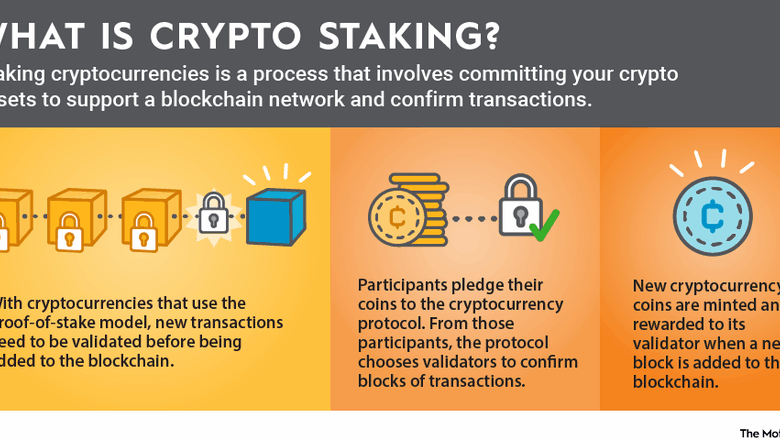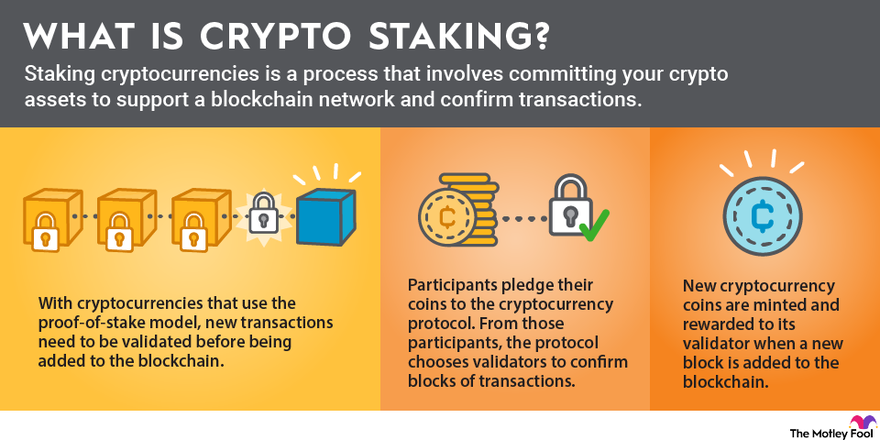
How to Identify the Most Rewarding Crypto Staking Coins
How to Identify the Most Rewarding Crypto Staking Coins is your guide to navigating the exciting yet complex world of crypto staking. This in-depth exploration dives into evaluating various coins, understanding the risks and rewards, and ultimately crafting a strategy for maximizing your potential returns.
We’ll cover everything from the fundamentals of crypto staking to analyzing network security, project teams, and market trends. Get ready to unlock the secrets to finding the most promising staking opportunities and building a sustainable crypto portfolio.
Understanding Crypto Staking

Source: ytimg.com
Crypto staking has emerged as a compelling alternative income stream within the cryptocurrency landscape. It leverages your holdings to support the network’s operations, potentially rewarding you with cryptocurrency or other incentives. This method differs significantly from traditional investing, requiring a more active approach. This section delves into the intricacies of crypto staking, examining its mechanics, various types, associated risks, and platform comparisons.Crypto staking, at its core, involves locking up your cryptocurrencies to validate transactions on a blockchain network.
In return for this service, you receive rewards, often in the form of newly minted coins or tokens. This process is analogous to lending your assets to the network, with the crucial difference that the funds are not passively held but actively participate in the network’s security and functioning.
Staking Mechanics and Types
Crypto staking mechanisms differ based on the underlying blockchain’s consensus algorithm. Proof-of-Stake (PoS) is a prominent example, where validators (individuals staking their crypto) compete to verify and add new blocks to the blockchain. The probability of a validator being chosen is proportional to the amount they have staked. This contrasts with Proof-of-Work (PoW), where computational power is the primary factor in block validation.
Another variation is delegated staking, where users delegate their staking rights to a third-party validator, often a staking pool or service.
Different Staking Methods
Staking methods vary considerably. Proof-of-Stake (PoS) mechanisms, as mentioned, allow users to lock up their cryptocurrencies to validate transactions, receiving rewards in return. In contrast, delegated staking simplifies the process, enabling users to delegate their staking rights to a validator, often in exchange for a portion of the rewards. These methods each present different trade-offs in terms of security, control, and potential returns.
Risks Associated with Crypto Staking
While staking offers potential rewards, it’s crucial to understand the associated risks. One significant risk is the potential for platform failure or hacks, leading to the loss of staked funds. Furthermore, fluctuating market prices for the underlying cryptocurrency can impact the profitability of staking. A significant risk is the impermanent loss, particularly in yield farming, where the returns on staked assets can fluctuate dramatically.
Comparison of Staking Platforms
| Platform | Security Measures | Fees | User Experience |
|---|---|---|---|
| Binance Staking | Binance’s robust security infrastructure, including multi-factor authentication and cold storage, is a major selling point. | Fees typically vary based on the staked asset and duration. | Generally user-friendly, with intuitive interfaces for staking and managing assets. |
| Coinbase Staking | Coinbase’s security measures include encryption, two-factor authentication, and security audits. | Fees are generally transparent and are often dependent on the staked coin. | Coinbase’s staking platform is accessible through their user-friendly interface. |
| Kraken Staking | Kraken, known for its strong security measures, uses advanced encryption protocols. | Staking fees typically align with market standards. | Kraken’s platform offers a comprehensive staking interface, facilitating seamless asset management. |
This table provides a concise comparison of various staking platforms, highlighting their respective security protocols, transaction fees, and overall user experience. It’s important to thoroughly research and compare platforms before making any staking decisions.
Evaluating Coin Performance Metrics
Staking rewards in the cryptocurrency world are directly tied to a coin’s performance. Understanding the key metrics that drive this performance is crucial for making informed decisions. A coin’s network activity, price volatility, and staking APR are all essential factors in determining its potential return on investment.Evaluating a coin’s staking performance requires a nuanced approach, considering not just the current numbers but also the historical trends and the broader market context.
This allows for a more realistic assessment of the coin’s long-term viability and its suitability for your investment strategy.
Network Activity
Network activity, encompassing transaction volume, node count, and overall user engagement, provides insight into a coin’s health and adoption rate. High network activity often correlates with higher staking rewards due to increased demand for the network’s services. A vibrant and active network signifies a potentially more robust and reliable staking platform. Conversely, low network activity can signal potential issues with the coin’s adoption or the sustainability of its network.
Token Price Volatility
Price volatility is a significant factor to consider when evaluating staking rewards. High volatility can lead to unpredictable returns, potentially diminishing the attractiveness of staking. On the other hand, a stable token price can offer a more predictable staking return. It’s important to weigh the potential for high rewards against the risk of significant price fluctuations.
Staking APR
The Annual Percentage Rate (APR) is a key metric reflecting the potential return on your staked tokens. A higher APR indicates a potentially more lucrative staking opportunity. However, it’s crucial to compare APRs across similar projects and consider other factors such as network activity and token volatility to get a complete picture. A high APR in a volatile market may not always translate into a positive return.
Always conduct thorough research to fully understand the context of the APR.
Historical Data and Trends, How to Identify the Most Rewarding Crypto Staking Coins
Analyzing historical staking performance data and trends provides valuable context. Observing the coin’s past performance during periods of market volatility can help gauge its resilience and sustainability. For example, has the coin consistently delivered on its staking rewards promises? Identifying consistent upward trends in staking rewards, network activity, and adoption rate is crucial for identifying potentially rewarding staking opportunities.
Key Performance Indicators (KPIs) for Evaluating Staking Coins
| KPI | Description | Interpretation |
|---|---|---|
| Network Activity (Transactions/Day, Nodes) | Measures the level of activity on the blockchain. | Higher activity suggests greater demand and potential for higher staking rewards. |
| Token Price Volatility (Standard Deviation, Price Range) | Indicates the degree of price fluctuations. | Lower volatility suggests more predictable returns, while higher volatility introduces risk. |
| Staking APR | Annual Percentage Rate for staking. | Higher APR suggests potentially lucrative rewards, but requires evaluation against other factors. |
| Historical Staking Performance (Past APRs, Trends) | Evaluates past returns and consistency. | Consistent high returns and positive trends suggest a reliable staking opportunity. |
| Community Health and Development | Examines the community’s activity and project’s roadmap. | A strong and active community indicates a project’s commitment to growth and sustainability. |
Analyzing Network Security and Stability

Source: imgix.net
Staking networks, while offering attractive returns, inherently carry risks tied to the security and stability of the underlying blockchain. Understanding these aspects is crucial for making informed decisions about which coins to stake. This section delves into the security protocols, potential vulnerabilities, and stability assessments vital for evaluating a staking network’s reliability.Network security is a multifaceted issue, going beyond simple encryption.
Robust protocols, active community engagement, and transparent audit processes all contribute to a network’s resilience. Assessing the stability of a staking platform involves scrutinizing its historical performance, community activity, and the technical sophistication of its developers.
Security Protocols of Different Staking Networks
Various staking networks employ diverse security protocols. Understanding these protocols provides insight into their respective strengths and weaknesses. Different methods, from proof-of-stake algorithms to multi-signature wallets, underpin the security of these networks. The choice of protocol significantly influences the network’s resistance to attacks.
- Proof-of-Stake (PoS) Mechanisms: Different PoS implementations vary in their security features. Some use complex cryptographic functions to validate transactions, while others rely on more basic consensus mechanisms. The complexity of the algorithm directly correlates with the level of security offered. For example, networks employing sophisticated cryptographic techniques are generally considered more resistant to attacks than those with simpler approaches.
- Audits and Reviews: Independent audits play a vital role in verifying the security of a staking network. Thorough audits examine the code for vulnerabilities and potential weaknesses. Reputable audits provide a degree of assurance regarding the network’s security posture. For instance, a network with multiple, well-regarded audits from established firms carries more weight than one with only a single, less-known audit.
- Community Engagement and Governance: A vibrant and engaged community can play a significant role in identifying and mitigating security risks. Transparent governance mechanisms empower the community to participate in decision-making, enhancing overall security. Active community involvement helps to identify and address potential vulnerabilities quickly.
Comparing Security Measures of Various Platforms
Comparing the security measures implemented by different platforms requires careful consideration of several factors. A comprehensive analysis necessitates examining the specific security protocols, audit history, and community engagement for each network.
| Staking Network | Security Protocol | Vulnerabilities (Potential Risks) |
|---|---|---|
| Network A | Advanced PoS algorithm with multi-signature wallets | Limited history, fewer audits available |
| Network B | Standard PoS algorithm with single-signature wallets | Extensive audit history, active community |
| Network C | Hybrid PoS/Proof-of-Work algorithm | Moderate audit history, mixed community feedback |
Assessing Network Stability and Resilience
Assessing the stability and resilience of a staking network requires a holistic approach. Historical performance, community activity, and the technical expertise of the development team all contribute to the overall picture.
- Historical Performance: Examining the network’s history for any significant fluctuations or outages is crucial. A network with a stable and consistent performance over time suggests higher resilience.
- Community Activity: A large and active community often signifies greater support and a higher likelihood of rapid response to issues.
- Developer Team Expertise: A development team with a proven track record of success and a commitment to security enhances the network’s resilience.
Assessing Project Team and Community
Beyond technical metrics, the success of a crypto staking coin hinges significantly on the people behind it and the community it fosters. A strong team with a proven track record, coupled with active and engaged community members, often translates to a more sustainable and rewarding investment. This section dives into evaluating the project team, community, and future development plans to better assess the long-term potential of a staking coin.Evaluating a crypto project’s team and community goes beyond simply looking at social media engagement.
A dedicated and experienced team, along with a vibrant, supportive community, often indicates a project with a greater chance of long-term success. These factors contribute significantly to the project’s ability to adapt to market changes, address issues effectively, and maintain the integrity of the staking protocol.
Project Team Expertise and Experience
A strong project team possesses a combination of technical expertise, industry knowledge, and experience. Assessing their background and previous accomplishments provides valuable insights into the team’s potential to deliver on their promises. Identifying areas of expertise, such as blockchain development, security protocols, or financial modeling, helps gauge their capability to execute the project effectively.
Community Engagement and Support
Community engagement is crucial for the long-term health and success of any crypto project. A vibrant and active community demonstrates a vested interest in the project, providing valuable feedback, participating in discussions, and supporting the project’s growth. Evaluating community engagement involves looking at metrics like social media activity, forum participation, and the frequency of updates and interactions between the team and community members.
Project Roadmap and Future Development Plans
A well-defined roadmap provides clarity on the project’s future trajectory and Artikels specific milestones and timelines for development. A transparent roadmap, outlining future development plans and anticipated features, demonstrates a commitment to long-term vision and provides investors with a better understanding of the project’s strategy. It also indicates the team’s ability to adapt to evolving market conditions and user needs.
Projects with a clear and detailed roadmap often signal a greater likelihood of continued innovation and growth.
Example Project Team Analysis
| Team Member | Background | Track Record |
|---|---|---|
| Alice Chen | PhD in Cryptography, 10+ years experience in blockchain security | Lead security architect for several successful decentralized applications (dApps) |
| Bob Lee | MBA, 5+ years experience in financial markets, blockchain enthusiast | Co-founder and CEO of a successful cryptocurrency exchange |
| Charlie Brown | Software Engineer, 8+ years experience in blockchain development | Developed and maintained critical components of multiple successful crypto projects |
This table provides a sample analysis of a project team, highlighting relevant experience and background. Each team member’s contribution should be evaluated for their potential impact on the project’s success. This detailed overview demonstrates the importance of evaluating the team’s experience and expertise when assessing a crypto staking coin.
Identifying Potential Risks and Rewards

Source: foolcdn.com
Staking cryptocurrencies presents exciting opportunities for passive income, but it’s crucial to understand the associated risks. This section delves into the potential pitfalls and rewards, allowing you to make informed decisions about which staking coins to consider. Thorough due diligence is paramount in this space, as the rewards are often dependent on the associated risks.Evaluating the potential rewards and risks of different staking coins requires a careful analysis of several factors, from the coin’s underlying technology to the performance of the project team.
Figuring out the best crypto staking coins can feel like a treasure hunt. While some projects offer high returns, others vanish into the ether. Fortunately, the way AI is revolutionizing crypto trading strategies, as detailed in this article How Artificial Intelligence Is Transforming Cryptocurrency Trading Strategies , could provide a crucial edge. By analyzing historical data and market trends, AI can potentially identify promising staking coins with higher yields and lower risks, ultimately helping you find the most rewarding options in the crypto world.
Understanding the nuances of each coin’s staking mechanism is essential to anticipating potential challenges and maximizing your return. A balanced perspective that weighs both the potential gains and the possible downsides is key to successful staking.
Potential Risks Associated with Staking
Staking, while potentially lucrative, carries inherent risks. These risks range from network vulnerabilities to project mismanagement, impacting the stability of the platform and the security of your staked assets. It’s essential to proactively identify these risks to mitigate their impact on your investments.
Figuring out the best crypto staking coins for maximum returns can be tricky. A crucial factor, often overlooked, is the overall regulatory environment. Understanding the clarity and stability of the regulations surrounding these coins, like Why Regulatory Clarity is Crucial for Crypto Mass Adoption , is vital. Ultimately, a well-regulated market fosters trust and confidence, making it easier to pinpoint those coins offering the most lucrative staking opportunities.
- Network Vulnerability: A poorly designed or vulnerable blockchain network can lead to unforeseen issues, including hacking attempts or protocol failures. This can compromise the security of your staked assets, potentially leading to significant financial losses. The risk is directly proportional to the network’s security protocols and history of vulnerabilities. For example, a coin with a history of repeated security breaches presents a significantly higher risk than one with a robust and well-maintained security infrastructure.
- Project Team Reliability: The success of a staking project heavily relies on the competence and commitment of the project team. Lack of transparency, poor communication, or even a sudden shift in the team’s direction can severely impact the project’s viability and the value of your staked assets. Investigating the team’s track record, expertise, and commitment to the project is crucial.
A team with limited experience or a history of failed projects presents a higher risk compared to a well-established team with proven track records.
- Market Volatility: The cryptocurrency market is notoriously volatile. Sudden price drops or unexpected market crashes can significantly impact the value of the staked coin, potentially reducing your returns or even leading to losses. The correlation between the coin’s price and its staking rewards is an important factor to consider when assessing market volatility risks.
Potential Rewards and Likelihood
Staking offers the potential for passive income, but the likelihood of achieving substantial rewards is not guaranteed. Returns vary depending on the coin’s staking mechanism and the prevailing market conditions.
- Passive Income Generation: Staking often provides a mechanism for earning rewards without actively trading. The amount of passive income generated can vary significantly between coins. Some coins offer higher APYs (Annual Percentage Yields), while others provide lower rates. The coin’s market capitalization and the current staking market conditions are major factors in determining staking rewards.
- Potential for Appreciation: If the staking coin’s value increases, your staked assets could appreciate in value, leading to substantial profits. However, this is dependent on various market factors, including overall market sentiment and the coin’s performance.
- Likelihood of Achieving Rewards: The likelihood of achieving substantial rewards is contingent on several factors, including the coin’s underlying technology, the project team’s competency, market conditions, and the coin’s overall market sentiment. While some coins offer high APYs, this doesn’t guarantee significant returns. Thorough research and risk assessment are crucial to understanding the probability of achieving the anticipated returns.
Comparison of Risks and Rewards Across Coins
A comprehensive comparison of staking coins requires a thorough evaluation of their respective risks and rewards. Different coins offer varying levels of security, project team experience, and market stability, which directly affect the potential rewards and risks.
| Coin | Potential Rewards | Potential Risks |
|---|---|---|
| Coin A | High APY, potential for significant price appreciation | Volatile market, security concerns |
| Coin B | Moderate APY, stable market | Limited potential for price appreciation, less active community |
| Coin C | Low APY, high security | Limited market presence, less active development |
Comparing Staking Coin Options
Choosing the right crypto staking coin can significantly impact your returns and risk profile. Carefully comparing different options, understanding their individual characteristics, and assessing potential risks and rewards are crucial steps in making an informed decision. This involves a deep dive into the technical aspects of each coin, the performance of its network, and the strength of its development team.A successful staking strategy requires a thorough understanding of the nuances of each coin.
It’s not simply about selecting the coin with the highest staking APR. A balanced approach considers the coin’s security, stability, and the long-term viability of the project.
Staking Rewards Comparison
Different staking coins offer varying annual percentage rates (APRs). Higher APRs are attractive, but they often come with increased risk. It’s essential to analyze the historical performance of the staking APR for each coin, considering factors such as market volatility and network activity. Understanding the potential for fluctuations in the APR is critical to managing your expectations.
For example, a coin with a consistently high APR might be worth further investigation, but its history of fluctuations should be considered as part of the overall risk assessment.
Figuring out the best crypto staking coins can be tricky, but it’s key to a rewarding investment. Finding peace and tranquility, like through using lemongrass for stress relief and better sleep How to Use Lemongrass to Relieve Stress and Improve Sleep Quality , can actually help you stay focused on your investment strategy. Ultimately, understanding the market trends and the potential of each coin is crucial to picking the most rewarding options.
Risk Assessment and Potential Returns
Staking involves inherent risks. The value of the staked coin can fluctuate, and network issues or security vulnerabilities can lead to losses. The potential returns are directly related to the risks involved. Coins with higher staking rewards generally have higher risk profiles. For instance, newer or less established coins often offer high initial staking rewards but come with higher risks of price volatility and project failure.
It’s crucial to weigh the potential reward against the potential loss.
Factors to Consider in a Staking Decision
Several factors influence the decision to stake in a particular coin. These factors include:
- Staking APR: The annual percentage rate (APR) directly impacts the potential return. However, a higher APR doesn’t always equate to a better investment. The historical performance of the APR, market conditions, and network activity should all be considered.
- Network Security and Stability: A secure and stable network is essential for protecting your staked assets. A history of successful network upgrades and robust security measures are key indicators of network reliability. Examining the network’s consensus mechanism, security audits, and response to previous vulnerabilities provides valuable insight.
- Project Team and Community: A strong project team with proven expertise and a vibrant, engaged community can indicate the long-term viability of the project. Assessing the team’s track record and the community’s engagement levels can help predict the future success of the project.
- Potential Risks and Rewards: Understanding the potential risks, including price volatility, security breaches, and project failure, is vital. Consider the potential returns in relation to the associated risks to make a balanced decision. A comprehensive risk assessment should include analysis of market conditions and historical performance.
Comparative Analysis of Staking Coins
The following table provides a simplified comparison of different staking coins, highlighting their staking APR, network security, and project team information. This is not an exhaustive list, and further research is recommended.
| Coin | Staking APR (estimated) | Network Security | Project Team Information |
|---|---|---|---|
| Coin A | 15% | Strong, multiple audits | Experienced team with a proven track record |
| Coin B | 20% | Moderate, recent vulnerabilities | Relatively new team with limited experience |
| Coin C | 10% | Excellent, consistently updated | Well-established team with a large community |
Implementing a Staking Strategy
Staking cryptocurrencies requires more than just selecting a coin. A well-defined strategy is crucial for maximizing returns and mitigating risks. A haphazard approach can lead to missed opportunities and potential losses. This section will delve into the importance of a structured staking strategy, encompassing diversification, goal setting, and a systematic approach.A robust staking strategy is not just about picking coins; it’s about creating a roadmap for your crypto staking journey.
It involves considering various factors, understanding the potential risks and rewards, and defining clear goals to guide your decisions. This structured approach will enable you to make informed choices, manage your risk effectively, and potentially increase your overall returns.
Importance of a Well-Defined Staking Strategy
A well-defined staking strategy provides a framework for making informed decisions throughout your staking journey. It helps you stay focused on your financial objectives, avoid impulsive choices, and make decisions based on a clear understanding of your risk tolerance and potential returns. This organized approach is crucial for navigating the complex world of crypto staking and maximizing the potential rewards.
Importance of Diversifying a Staking Portfolio
Diversification is a cornerstone of any successful investment strategy, and crypto staking is no exception. Holding a diverse portfolio across different coins reduces the impact of any single coin’s performance fluctuations on your overall returns. This approach mitigates risk by spreading your investment across various projects, minimizing potential losses if one coin experiences a downturn. By diversifying, you can achieve a more stable and potentially higher return on investment.
Factors to Consider When Setting Staking Goals and Targets
Defining clear staking goals and targets is essential for tracking progress and maintaining focus. Consider your risk tolerance, desired return on investment (ROI), and the time horizon for your staking activities. For example, a conservative investor may prioritize stability over high returns, while an aggressive investor might be willing to accept higher risk for potentially greater rewards. Your individual financial situation and long-term objectives should also play a crucial role in setting these targets.
A clear understanding of your financial capacity and risk tolerance is essential for setting realistic goals.
Designing a Systematic Staking Strategy
A systematic staking strategy ensures a consistent and well-structured approach to your crypto staking endeavors. This framework helps avoid impulsive decisions and maintains a consistent course of action. A flowchart can visually represent this strategy.

Note: A visual flowchart would be helpful here. It should Artikel the steps involved in developing and implementing a staking strategy. This could include steps like researching coins, assessing performance metrics, setting goals, and monitoring returns.
Staying Updated on Market Trends: How To Identify The Most Rewarding Crypto Staking Coins
Staying informed about market trends is crucial for making sound crypto staking decisions. The crypto market is volatile and dynamic, with new projects emerging and existing ones experiencing shifts in popularity and value. Understanding these changes is essential to identifying promising staking opportunities and mitigating potential risks.Staying abreast of market news and trends allows you to make informed choices about which coins to stake, as well as anticipate potential challenges or opportunities.
This vigilance is paramount for successful crypto staking.
Reliable Sources for Market Information
Staying updated on market information is vital for navigating the crypto staking landscape. Reputable news outlets and analytical platforms offer valuable insights. These sources often provide in-depth analysis of market trends, project developments, and regulatory updates. A good approach is to cultivate a diverse information diet, seeking multiple perspectives. Cryptocurrency-specific news sites, financial news aggregators with a focus on blockchain technology, and established market analysis platforms can all contribute to a holistic understanding.
Identifying Potential Scams and Red Flags
The crypto staking market, like any emerging market, can be vulnerable to scams and fraudulent activities. Developing a discerning eye for potential red flags is essential to avoid significant losses. Be wary of promises of unrealistic returns, testimonials from anonymous or untrustworthy sources, and vague or overly optimistic project descriptions. Excessive social media promotion without substantial backing, and a lack of transparency in project details are often warning signs.
Identifying Potential Risks and Rewards
A table illustrating current market trends and their potential impact on staking decisions:
| Market Trend | Potential Impact on Staking Decisions |
|---|---|
| Increased regulatory scrutiny in certain regions | Potential for stricter regulations affecting staking projects operating in those areas. Stakeholders may need to assess compliance and legal implications. |
| A significant price increase in a specific staking coin | Increased potential returns for existing stakers. However, it may also attract more competition, and prices could fluctuate unpredictably. |
| Decentralized Finance (DeFi) protocol vulnerabilities impacting staking platforms | Stakers should closely monitor the security of DeFi protocols used by staking platforms to mitigate risks. This might involve seeking platforms with robust security audits. |
| A significant downturn in the overall crypto market | Potential for decreased returns on staking rewards and increased risk of losses. Stakers need to be prepared for volatility and make risk-assessment calculations. |
| Emergence of new staking platforms with innovative features | Potentially lucrative staking opportunities, with the opportunity to explore newer protocols and functionalities. |
Closure
In conclusion, identifying the most rewarding crypto staking coins requires a multifaceted approach. Thorough research, careful evaluation of metrics, and a well-defined strategy are crucial for success. By understanding the risks and rewards associated with each coin, you can build a portfolio tailored to your investment goals. Remember to stay informed about market trends and adapt your strategy as the landscape evolves.
The crypto staking market is dynamic, so continuous learning and adaptation are key.
Key Questions Answered
What are the most common risks associated with crypto staking?
Security vulnerabilities in the staking network, sudden price fluctuations of the staked coin, and the possibility of project failure are some of the most prevalent risks.
How can I diversify my staking portfolio?
Diversifying your staking portfolio involves staking across different coins and platforms to mitigate risk. This approach reduces reliance on a single coin and spreads potential losses.
What are some reliable sources for market information and news about crypto staking?
Reputable financial news outlets, industry-specific blogs, and crypto-focused social media groups can provide valuable insights into market trends.
What is the difference between proof-of-stake and delegated staking?
Proof-of-stake involves direct participation in validating transactions, whereas delegated staking allows users to delegate their tokens to a validator, allowing someone else to validate the transactions.





